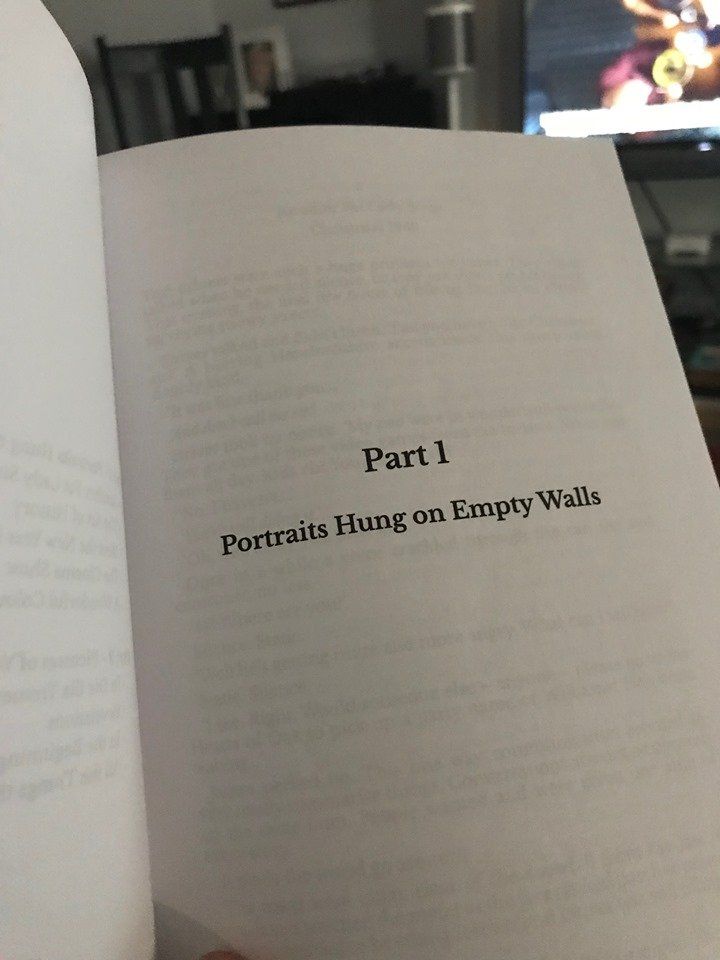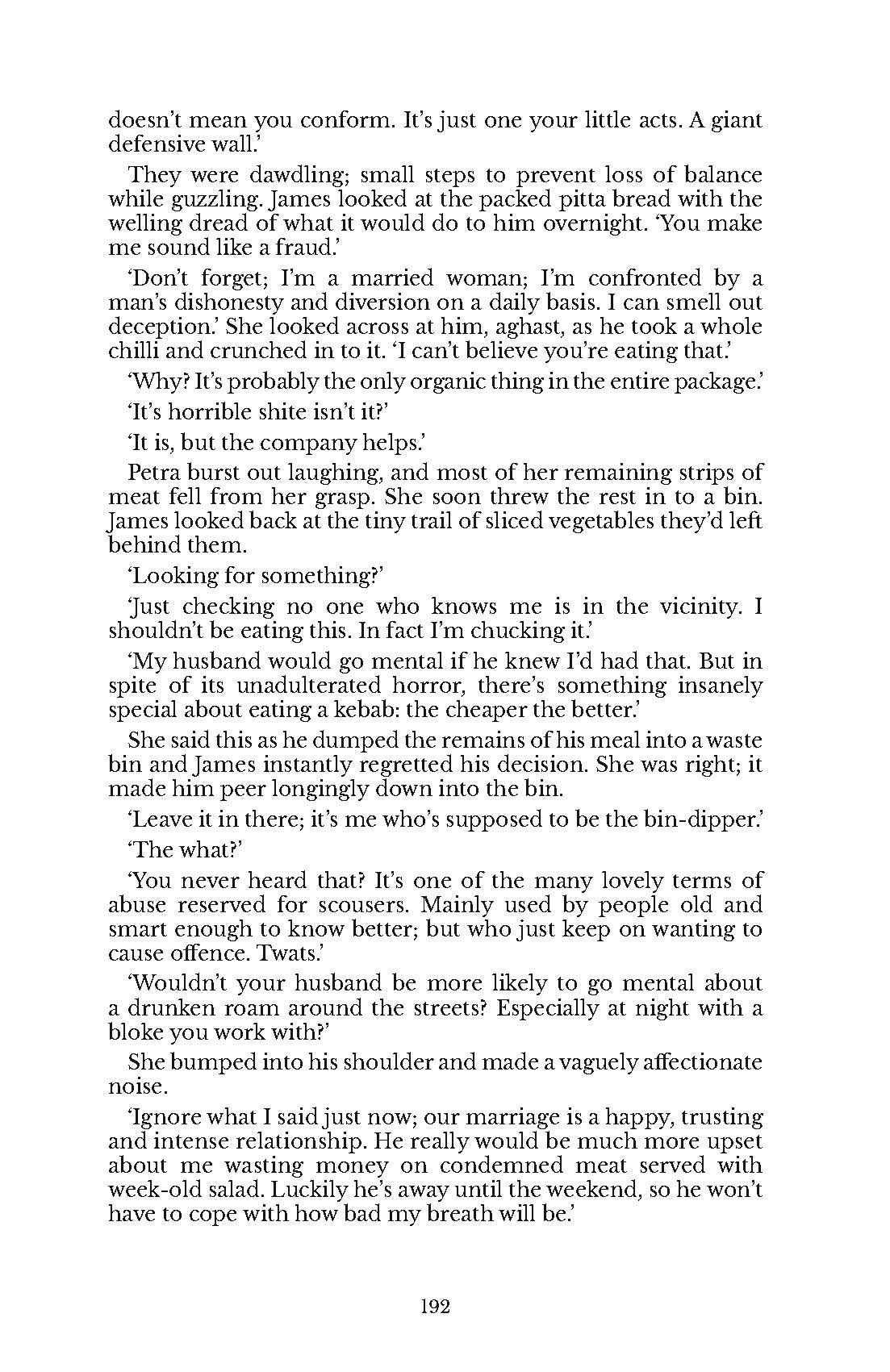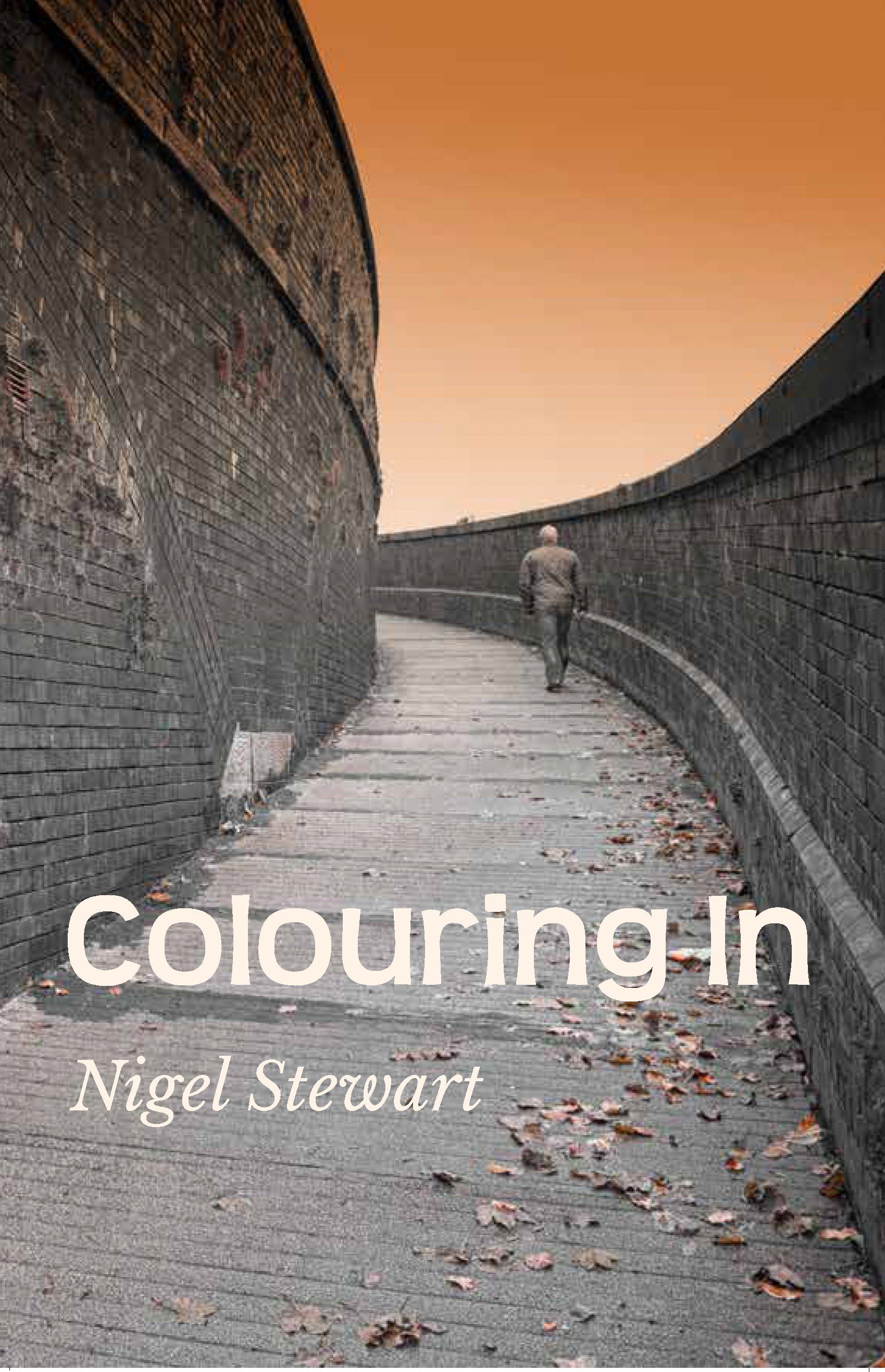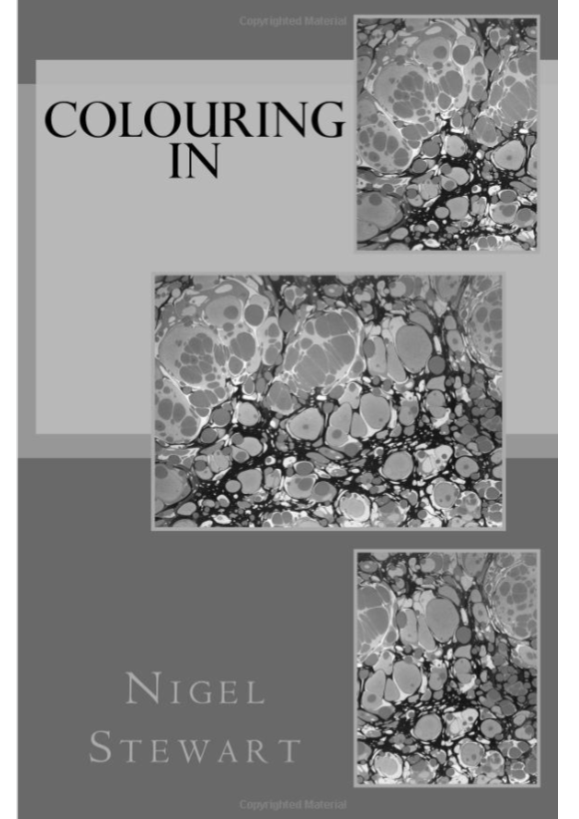Very proud to be a Jacqueline Gold CBE 'Women In Business' Competiton Winner 2019.
#WOW By Jacqueline Gold
Click the gold badge to take you to her profile.

During the first few weeks of 2018 I’d begun to feel deeply unsettled by what I was writing. I was delving into the behaviour of people and organisations opposing each other on social (and traditional) media. I realised that the central character Edward Clayton was getting inside my head, especially as I was writing in the first person; and Ed is not an easy man to love. There were scenes of violence, either physical or verbal. I’d begun to sense great fissures in society, irreparable and entrenched; as if conflict is simply the only way many people can keep in step. I dislike conflict, especially for conflict’s sake. I’d always known there was hatred, prejudice and malice: I just didn’t realise how close we’d become to those being embedded as customary. And almost certainly to the benefit of a new kind of Establishment.
I slid down into a dip of confidence about whether this was worth the effort and the potential risk to my mental wellbeing. The book was around half-finished and, because I write in sequence, developing the story and plot on a projected path, I knew there were things to write that would be even more bleak.
There were disquieting things in my personal life. My writing output slowed to a trickle and, more often than not, I opened my laptop and sat staring, clueless, at the screen before turning away to talk tat on social media.
Existalien really didn’t seem to be important. It felt too dark and unhappy.
As I passed my 59th birthday in April 2018, I was in something of a meltdown. Perhaps my flirtation with Imposter Syndrome had become a marriage?
Then Viv Ainslie gave me a great piece of advice. Write Something Else.
Of course: WRITE SOMETHING ELSE Nigel.
Easy.
Except…. the world is submerged beneath the outputs of writers: journalists; authors; Tweeters; novelists; bloggers; diarists. And the written word is supplemented by the spoken, the visual, the subliminal. All the world’s a stage. What, therefore, would be the value of another several thousand words from a negligible nobody?
But Viv slapped my face again (metaphoric) with more advice: it doesn’t have to be published or earth-shattering; it just needs to be something that isn’t Existalien.
It was a matter of weeks until the start of the football World Cup in Russia. I love football and, with a jolt of horror, I realised it was the 15th World Cup in my lifetime. And there was my subject matter. A review of my memories from each tournament – every single one since Chile, 1962.
As it turned out I only completed eight pieces, ending with Italia 90. The pieces were irrelevant and hardly anyone read them on my WordPress blog. They’ve been consigned to history, and I’m not even sure they’re still there. But the effort did its job. By the middle of June, Existalien was back on its critical path; I was writing again. What I was writing was good. I loved it. It worked. I felt I was writing effectively and with purpose.
Summer was hugely productive and by the early part of autumn I needed a few more weeks of effort to complete Existalien. The strands of what I’d started, with Edward Clayton falling in love as he walked the streets, were entwined into something powerful and dark.
As the days grew shorter and September drew to its close, I had a magical moment that was writing-related, but nothing to do with Existalien. Old friends held a party, in a village hall near Wantage. It was his 60th, and their 25th anniversary, and their daughter’s 18th. There was live music, good food and great company. I spent most of the evening dancing to the non-stop music and having a wonderful time.
The following Monday, I had another train journey into London for a business meeting. Another day seeing the things that form some of Existalien’s subject matter (the wafer-thin veneer of credible expertise in corporate life; the fact that delivering on tasks is less important than directing traffic; the crazed juggling of messages and mails and verbal discussion; offence in defence; meetings trembling with the fear of being accountable or getting found out; everyone desperate to get to their phones and whatever might be going on elsewhere) left me impatient to get it finished. Later that day, as I returned to Hook from Waterloo, I made my mind up that, once Existalien was complete, my next book would be happier and lighter. About a party, and the magical things that bring people together in celebration of something special.
Two days later, one of my mum’s neighbours called to tell me my mum had collapsed while out walking her dog. Within an hour, a policeman called to tell me that mum had died.
Grief isn’t something that has tick boxes or timelines. We suffer different things in different ways. In the days and weeks following mum’s death there was much to do: endless journeys; the slow clearance of a house and home; the dismantling of my parents’ lives; and the funeral. Barbara, my sister, joined me in that effort and we managed to keep going. People were good; all sorts of people. But my overwhelming feeling was of finality. My parents’ generation, born between the wars, was nearly all gone. And for me, it was now impossible to repair what had been a difficult, distant relationship with my mum.
When I found time, I took the offer of a place to stay in southern Spain and finished Existalien. I wrote for up to ten hours each day. The motivation I’d regained earlier in the summer flooded back, with what felt like a mania for closure. The completion of around 33,000 words in those seven days seemed to have no barriers and any fears I’d had – that grief would dampen any creativity – were misplaced.
As I typed the final sentence, I sat back with a great exhalation of relief. I needed that book out of my system and I needed to get back to some sort of contented normality.
The time away from lawyers, estate agents and my day job proved to be a cathartic and strangely happy time, not least during the few days when a dear old friend joined me. The knowledge that an enduring friendship could still be playful and silly was good for me and the perfect reminder that there was a story to tell about the nature of such friendships and how they co-exist with family ties.
With Existalien finished, 2019 started with engagement and help from beta readers. In some cases, I shared segments; in others I asked for help with a review of the whole story. I asked people who I trust to give constructive comments, about three things:
• how the book made them feel;
• what they liked and didn’t like; and
• the credibility of the plot and characters.
I can’t stress enough how important it is to get third party opinion about your work. It feeds my understanding, and it feeds Purple Parrot’s. Our collaboration as author and small independent publisher means we both need what I can only call Voice of the Customer. It’s an invaluable process as it helps us see things through a reader’s eyes. In this case, I was given insights to people’s feelings about the characters and the language. Someone told me they felt there was too much text about the workplace and that it would turn people off. I also learned that most people feel that the book is a thriller.
In each case, I know that those people would tell me things I might not want to hear, but the feedback was generally positive. One of my favourite comments, from someone who read just the opening three sections, was ‘I’m already tense.’
The final piece of important feedback related to Existalien – as a title. It received mainly blank looks, and almost everyone I asked said ‘find something new’. I spent a while trawling through quotations, especially from novels like 1984 and Brave New World and settled on a new title: Secrets We Hide from Ourselves. But that didn’t make the cut either.
It was during a general read through the book a few weeks back that I found what I was looking for – from the mouth of the central character, Edward Clayton: “I had successfully danced on the lines between lies.”
The Lines Between Lies should be available this summer.

As we work through the last few weeks that will see my second novel published, I’ve been reflecting on its history.
After self-publishing Colouring In, on December 8th, 2016, I had a strong sense of wanting to do it all again. On one hand that book, and the effort needed to make it a tangible piece of work, had made me doubt its value and my own abilities – this despite encouragement from the good people who bought it. But on the other hand, there is something in the saying that creative people crave attention and, for sure, I did enjoy being told ‘you know something; you can write’. It meant a very great deal to me that some of my oldest friends expressed their pride in what I’d done. Getting more of that attention was undoubtedly a small driver for me to find the inspiration for a second novel.
But really it was because I’d realised how much I love writing.
Then weeks passed. Notebook scribbles, and countless voice memos proved uninspired whenever I reviewed them.
It was almost the end of January 2017 when my curiosity and observation were tweaked. A business trip to London, by train, was unexceptional until by chance I looked through the gap between the seats in front of me. I didn’t look for long, but what I saw was a laptop screen on which the facsimile of a law firm’s headed notepaper was crystal clear. So was the subject matter of the letter being written. It was indiscreet, and potentially a breach of both security and confidentiality. Had I chosen to, I could have picked up the recipient’s name and address; easily. But it was none of my business and I stopped looking.
l did post something on Facebook, in very general terms, about what I’d seen: a comment that indiscretion of that kind would be a sackable offence for many. And that raised a laugh or two, which seemed like the end of the affair. Soon forgotten and never remembered.
Until I began to link the two together. What might the consequences be if, in the same scenario, someone took a photo of that indiscretion then posted it on social media? With a throwaway comment, and a sense of fun. Naïve – certainly; silly – for sure; but innocent.
By the time the train reached London, I’d handwritten around three sides of A4 paper: outline characters; a broad timeline; ideas for events; consequences. When I emerged from Moorgate underground station to complete the last few hundred metres to my company’s office, an opening sentence was fizzing in my head: ‘Whenever I walk the streets of London, I fall in love once or twice every twenty-five metres.’ I stopped to jot it down on my phone and realised how the busy pavements of our capital city can’t handle someone standing still. It was like being a pariah; one person even told me I was a nuisance and should get out of their way.
I concentrated on my job for the rest of that day but had a heightened sense of my workplace as a setting for some of what I could write. Suddenly the behaviour and mannerisms of colleagues and the sheer silliness of the mind and power games seemed to be useful.
Within a few weeks, I’d begun writing the opening chapters and began the search for a title, or at least a working title.
It was around the time that British politicians were routinely using the word ‘Existential’ in their addresses to the nation, usually combined with the word ‘Crisis’. I knew I was embarking on something with a quite dark, threatening subject matter; about alienation and paranoia; about the absurdity of a life lived online. I found myself playing with a title – ‘Alien Nation’ – but felt it was too likely to indicate a sci-fi work and was probably already in use somewhere. And then I realised that Alien is a part of the word Existential – and I came up with the title ‘Existalien’: almost an anagram; and it really bugged me that I couldn’t find a use for the other T.
Existalien stuck and, for the next 18 months, it was going to be the title. This was important to me: the title for Colouring In came to me very late in its lifecycle and I always felt that somehow that book suffered from having no identity earlier in its creation.
But then something much more important came along.
What I’d learned in the self-publishing process for Colouring In was how bewildering, frustrating and tiring it is to edit and proof-read your own work. First, you have an emotional attachment to it that can make it hard to be self-critical or spot mistakes. Second, you may not be good at editing and proof-reading and are certainly neither an expert nor a professional. Third, it’s stopping you from writing. Those things made me wonder if help was available and a chance encounter on Instagram suggested that it was – in the shape of Viv Ainslie and her nascent publishing business.
Within a matter of weeks, we’d begun the collaboration that remains in place today. Viv liked the look of Colouring In, and we felt there was scope for it to be re-worked and published. But she also really liked the sound of Existalien, and when I shared the current sections with her, her enthusiasm was high. We soon agreed that I needed to do things I’d never done before: create a plan; write a synopsis; generate the history of each character and the events that shaped their lives.
Before I wrote any more of the book’s text, I did those things. Over four pages, I wrote a summary of the story, then a more detailed review of the plot and character resumés. Then I created a tabular overview of what happened in each section of the book, including how those linked to future or previous events and which characters were introduced. Then I used Excel to create two spreadsheets: first, a history, since 1974, of each character’s key dates (when they started school or got married or changed jobs); second, a timeline for the story itself – literally what happened on each day and during each week from the starting date in January 2017. Eventually I also added real life events to that timeline.
Those documents provided so much structure, that Existalien went through a phase in which I wrote a great deal in a short time. But - crucially – they didn’t stop me from going in a new direction when it became clear that I’d created a really interesting character who would benefit from playing a much bigger role.
In the second part of The Next Chapter, I’ll review a serious outbreak of writer’s block, how much I learned from beta readers, some of the book’s themes and the sense of achievement when I wrote the final words in November 2018.

It’s been a few days in which I’ve felt intense pride, not only in myself and Colouring In, but also in Viv Ainslie and our collaboration on the book’s publication.
Reflecting on that effort has been hugely worthwhile. Viv and I have exchanged many ideas and thoughts. Her input has been both direct and explicit, but also subliminal: her challenges about content or meaning made me look in great detail at my work and how a reader might feel about it. Viv has learned that I’m hugely self-critical and sometimes see more negative than positive in what I’ve done. She very carefully and successfully navigated that to ensure only the most obviously poor work was rejected or amended.
What did that look like?
Viv’s first critical reading of the book resulted in generally positive feedback and then a more detailed review. Her outputs came in the form of documented queries or challenges, covering the big things and the little things. We worked remotely by phone or face-face (often with an encouraging glass of wine or beer to oil the wheels). Without creating any wholesale changes to the plot or characters, Viv’s insights meant that the story flows better and has less padding. Even though some of our meetings were long, and quite intense hard work, I don’t think it ever felt like an irrelevance or a waste of time.

As well as the detailed effort on the book’s content, there was another important aspect to our work: clarity about what the story means. That might seem a strange thing to say, given how long I spent writing and then self-publishing Colouring In in 2016. Viv brought certainty that, in particular, the story is, at its core, about underachievement and creative inertia. I’d always seen the story, and James’ character in particular, as being a review of poor relationships and difficult lifestyle choices. What Viv did was link all that together as cause and effect. On its own, that revelation caused several steps upwards and onwards.
The work we did on content took months: constant reading and re-reading; snagging lists – which sometimes seemed to get longer and not shorter; and all the while with me tinkering around the edges (resulting, I’m certain, in a great deal of swearing Casa Ainslie). As recently as April, I decided that an entire chapter needed to be overhauled. Viv was somewhat sceptical, but the re-write resulted in something smarter and slicker that we both love. Then, during the first week in August, we had a final proof and one or two last readings meant that the book was ready for print and we had a publication date of August 16th.
It wasn’t just about the words and characters and plot. We spent a lot of time on design: font; margins; headings; titles. We decided on italics for James’ thoughts and on a different font for anything a character had written by hand. Viv designed a specific way to project the descriptions of some of James’ paintings. The overall effect is hugely pleasing.

And the cover!
The plan up until about June this year was to use a photo I’d taken up in the hills above Clitheroe one snowy March day in 2018. I’d filtered the monochrome picture so it had some neat shading as the roadway disappeared in to a gloomy backdrop. But one day, as Viv and I scrolled through the photos to use as my author picture on the cover, we found a shot Chris Nebard had taken near my home in Kirkham. It’s a remarkable photograph and once we all agreed it was perfect as the wrap-around cover, there was a flurry of activity in which the original was inverted and then baselined in the cover design. More work: to get the book title in the right place with the right font; to give the title that subtle shading to stop it being too bold against the image; to get the cover blurb box in the right place on the back cover; with the right font and indents; and with my photo in the right place. Can you judge a book by its cover? I’m never sure about that, but I’m completely certain that we left no stone unturned to assure that Colouring In has a striking, evocative and thought-provoking cover.
Our collaboration has left Viv and I with a hugely satisfying sense of achievement. Not only have we published my book, we’ve also set the scene for a way of working together that is constantly evolving. We have learned a great deal about what Good Looks Like, and I can’t wait to start work on my second book in the autumn.
Chris Nebard’s website is here: chrisnebard.zenfolio.com

It was August 2016 when I set up my Createspace account and began to learn how all that worked. I linked it with Kindle Direct Publishing so the book would be published in both paperback and e-book formats. I completed the reams of paperwork needed to satisfy the US tax authorities. I created an author’s biography on Amazon so people could learn about me. I selected a cover design from Createspace’s library: there was a wonderful one that seemed incredibly apposite: all greys and charcoals; with strange lines and boxes filled with bubbly textures; all perfectly set for Colouring In. And I wrote the few sentences of text that I now realised were known as ‘cover blurb’:
‘As the 1980s draw to a close, James Clifton lurches from drama to crisis to impasse. The present and future are inhibited by his reliance on a rose-tinted past, and his talents as an Artist are submerged in a morass of indecision and poor self-esteem. He is holding too many last straws. But a letter, from an admirer James cannot recall, is the catalyst for transformation. It sets him on a path that reveals a better future, based on a different past’.
I can’t describe how important those 84 words would prove to be. After 26 years of fooling around with a story and the idea of writing it, that blurb made sense of it all. Totally.
The work went on: I chose a colour photograph my son had taken while we were in France the previous summer in which I am smiling and relaxed and added it to the back cover design. I decided it should be the only bit of colour anywhere on the book. I learned about how to set the type so it would fit the tool’s requirements for margins and spacing. I did one incredibly important thing during this process: I stopped tinkering in any way with the text. This was an instinct that I can’t explain, but it proved important. The only thing I added was a list of people who I wanted to thank for all their help and support.
On September 9th 2016 I uploaded the Word file containing Colouring In to the Createspace tool and saw how it looked on their on-line viewer. It seemed fine, though I had to make some changes to line spacing and chapter start/end formatting. But after a couple of days of that I felt it was time to get a proof copy, and I parted with £10 for the privilege.
To this day I can still feel the colossal pride and joy I felt when that package landed on my doormat. Tearing off the cardboard packaging and seeing that cover, and the words ‘Colouring In’ and ‘Nigel Stewart’ on the front of real living book made me laugh aloud. I can also recall the sickening sense that something terrible had happened when I opened the book and saw the opening page. It looked horrible; a mess; jumbled nonsense. I’d actually learned nothing at all about formatting and typesetting. Worse was to come: I found mistake after mistake in the text; I found inconsistencies that I’d never seen reading the story on a screen or on A4 printed copy; and I found a lot that was just plain wrong. My lack of tinkering during the previous few weeks ended up being a good thing because now there was loads of it to do.
It took me another three months and four more proofs to get it right; or more accurately, ‘as right as I could make it’. I asked my friend Jayne to read a follow-up proof copy and her feedback was both encouraging and enlightening, especially since her husband, my friend Pete, is a publisher. After a working day, I’d start work on Colouring In - often taking me in to the early hours. I was exhausted and, for a while, running on empty.
In readiness for the big day, I set up an author page on Facebook, then a second page specifically about Colouring In. My friend Chris took some fantastic photographs of me in my adopted home town, Kirkham, and they went straight in to my Facebook pages. Some of them adorn this blog.
Then on December 8th 2016, I pressed all the buttons that made Colouring In a published work on Createspace and Kindle. The sense of worth and achievement was overwhelming, and sharing it with friends and family doubled those feelings of success. The book sold modest volumes and I was thrilled by some genuinely loving feedback about Colouring In. There was also an absolute stinker of a review by, of all people, the friend of a friend who had been so helpful about James’ Small Thoughts. He absolutely hated the book and ripped into it on almost every level. It was an unpleasant experience, not least because this was an individual acting like a high art critic in response to the work of an amateur. My friend Karen told me to take no notice, and herself wrote a lovely review on my author page. She ended with words something like: ‘… I ended up with the enjoyable feeling that I was reading a very long letter to a long-lost lover.’ Which was eerily close to the truth.
But Colouring In isn’t an autobiography, even though my oldest and closest friends have told me they think it is. One of them even thought one character was her, which proved to be a difficult conversation when we eventually had it. It’s true that James shares some of my experiences but he, and all that happens to him, is fiction.
It took me a painfully long time, but I’m immensely proud of Colouring In. It’s taught me that:
• Writing might be a solitary activity, but without the help, input and engagement of others I’d have failed. Ask, ask and ask again
• Unless it’s your day job, you can’t be a full time writer. It is a very long way behind family, health and happiness
• Despite my occasional self-doubts it wasn’t necessary to be a technical expert, trained in the whys and wherefores of writing and grammar
• Negative criticism is probably more important than positive, but both need to be constructive or no-one benefits. It was sometimes a mistake to believe that friendly interest was positive feedback
• Reading work on a screen is nothing like reading it on paper. And neither is like reading it on a Kindle or in a paperback. Be prepared for surprises and don’t worry when you find them
• It’s vital to write down, or dictate all your ideas as soon as you have them. It’s dumb to assume they will just sit safely in your head.
• I had no idea about my audience or the genre in which Colouring In would sit. That didn’t matter one bit, and I’m glad I wasn’t driven by it. It’s wrong to think about marketing when what you should be focused on is your story
• I had neither plan, timeline nor synopsis, which is a big part of why Colouring In took so long
• It is impossible to please everyone. Two examples: 1) my friend Annabel encouraged me to add that new ending; I agreed with that; but when my friend Sarah read the book she said it didn’t need the final chapter; and 2) my friend Sue said she thought Laura was too soft, so I made her tougher and more uncompromising; but many, many readers have told me they disliked Laura; one even said Laura is a narcissist who she hated
• And a bolt-on to the last point: whatever you think you’ve created in your characters, people will see different things. That doesn’t make your creation a mistake or Frankenstein’s monster - it’s part of the wonder of how your writing is received
• By looking around me at life, people, situations, places and faces I was able to create so much of what ended up in the book
That last point is so important. I thought Colouring In was it - the one novel I had in me; finished and an amazing experience. But in January 2017 something I saw during a train journey to London gave me a new set of ideas. Eighteen months later I’d completed my second novel.